Wilderness Journal Issue #026
A special edition on Martuwarra, the lifeblood of the western Kimberley, edited, written, filmed and photographed by the people that live there.
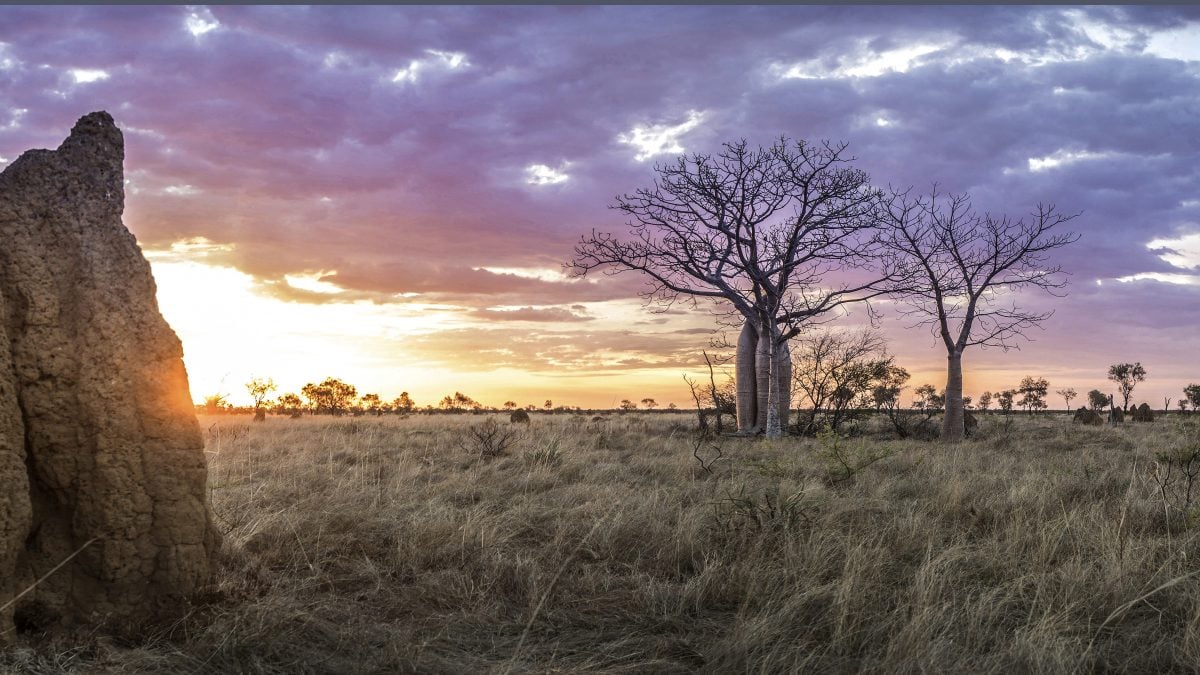
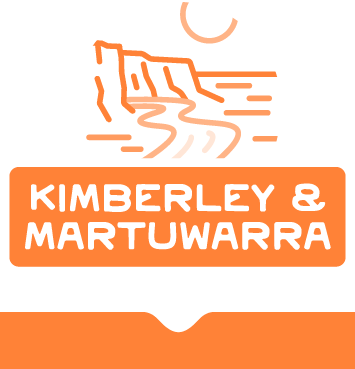
The Kimberley and the mighty river Martuwarra, have a long past—make sure they have a living future.

Australia is an ancient continent and the Kimberley feels like its oldest corner. Cliffs expose the world as it was hundreds of millions of years ago, alongside plants and animals that seem from another time. Through its heart run the waters of Martuwarra, a living, ancestral being for Traditional Custodians.
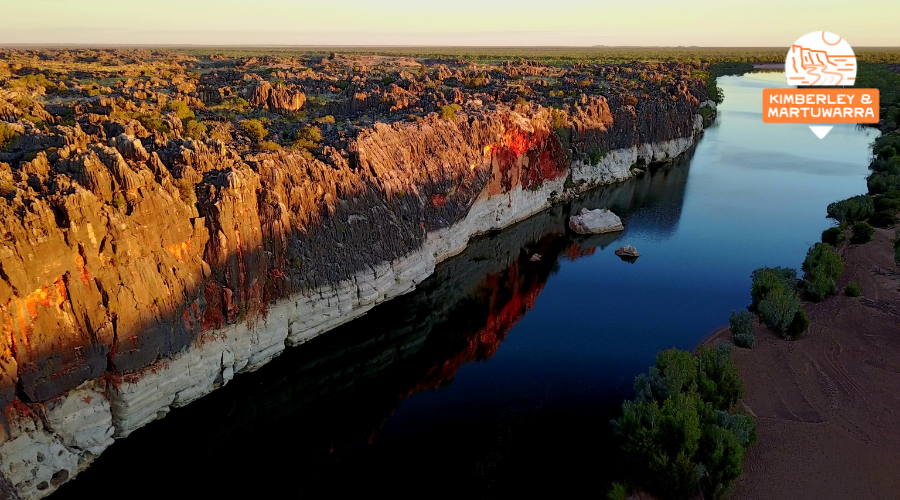
When monsoon rains drive in from the Indian Ocean from January to March, the Kimberley is transformed. Thunderstorms form over ochre desert and dry savannah, tributaries fill Martuwarra / Fitzroy River, bringing life to the land. Rainbow-hued Gouldian finches, red-winged parrots and spectacular purple-crowned fairy-wrens gather at fresh watering holes. The woodlands smell fresh and alive.

Martuwarra carves a 700km path through the West Kimberley, along deep sandstone gorges, savannah woodland and open floodplains. It has sustained nature and First Nations people for countless millennia. For the Martuwarra Fitzroy River Council, representing Traditional Custodians from Bunuba, Gooniyandi, Nyikina, Wangkatjunka and Walmajarri groups, Martuwarra is a living, ancestral being that can’t be ruthlessly exploited. To do so would be to break a chain of life stretching back millions of years.
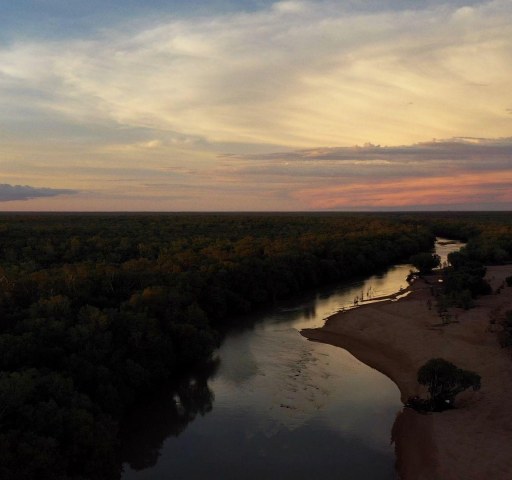
A special edition on Martuwarra, the lifeblood of the western Kimberley, edited, written, filmed and photographed by the people that live there.
The fact that Martuwarra has been flowing free for so long is evidenced by some of the ancient animals it sustains, like the northern river shark (Glyphis garricki), and freshwater (largetooth) sawfish (Pristis pristis).
Critically endangered, the sawfish can grow up to seven metres in length, bigger than a great white. Once found in rivers around the world, in the Congo, Vietnam and the Seychelles, the fish has been pushed to the brink from overfishing and habitat destruction. It’s testament to the health of Martuwarra that it’s one of the last strongholds for this magnificent animal.
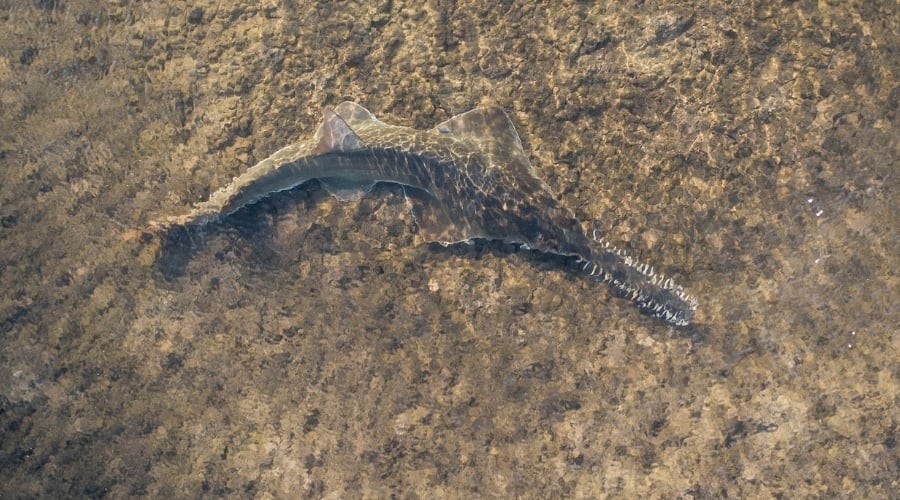
There are other ancients here too—the Kimberley’s boab trees could be the oldest organisms in Australia, some thought to be standing for over 1,500 years.
And there are some of the best preserved dinosaur footprints and trackways on the planet, left on the exposed rock on the coast north of Broome, betraying just how long this land has been facing the stars.
When you’re in the Kimberley, take time walking in a timeless land, along Martuwarra, inspect the thousand-year-old bark of a boab with your hand, and connect with this age-old place.
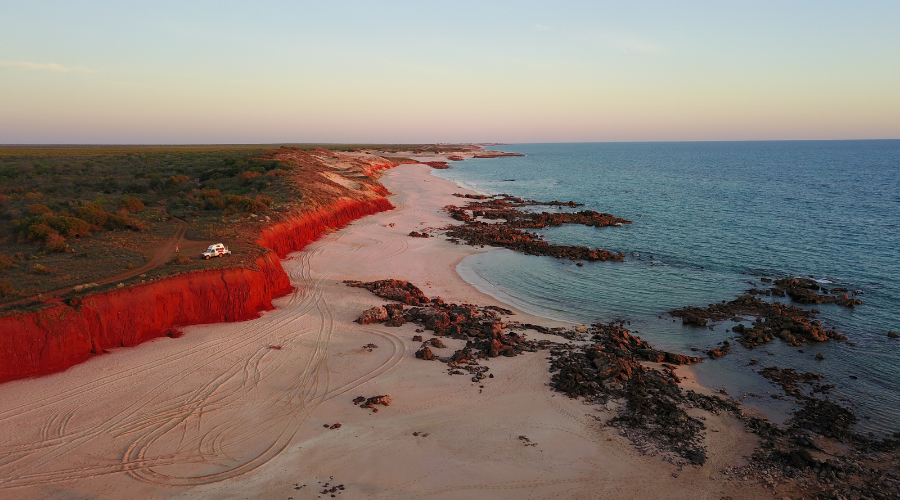
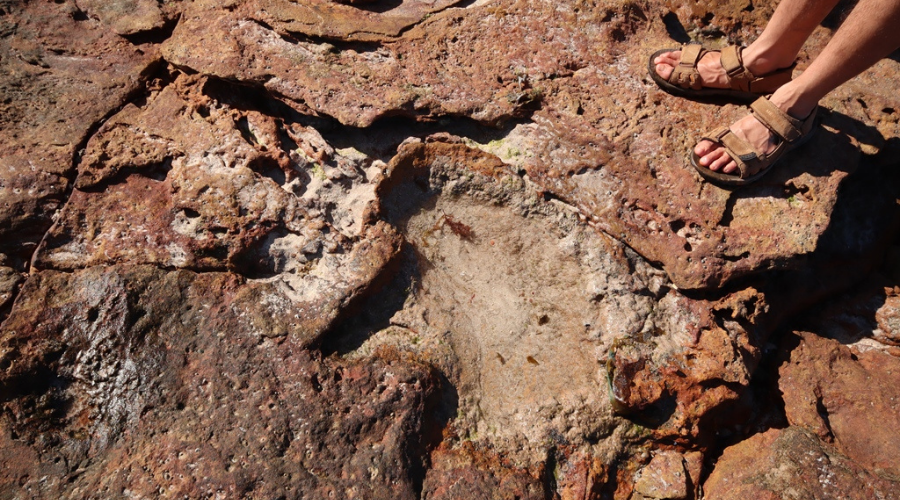
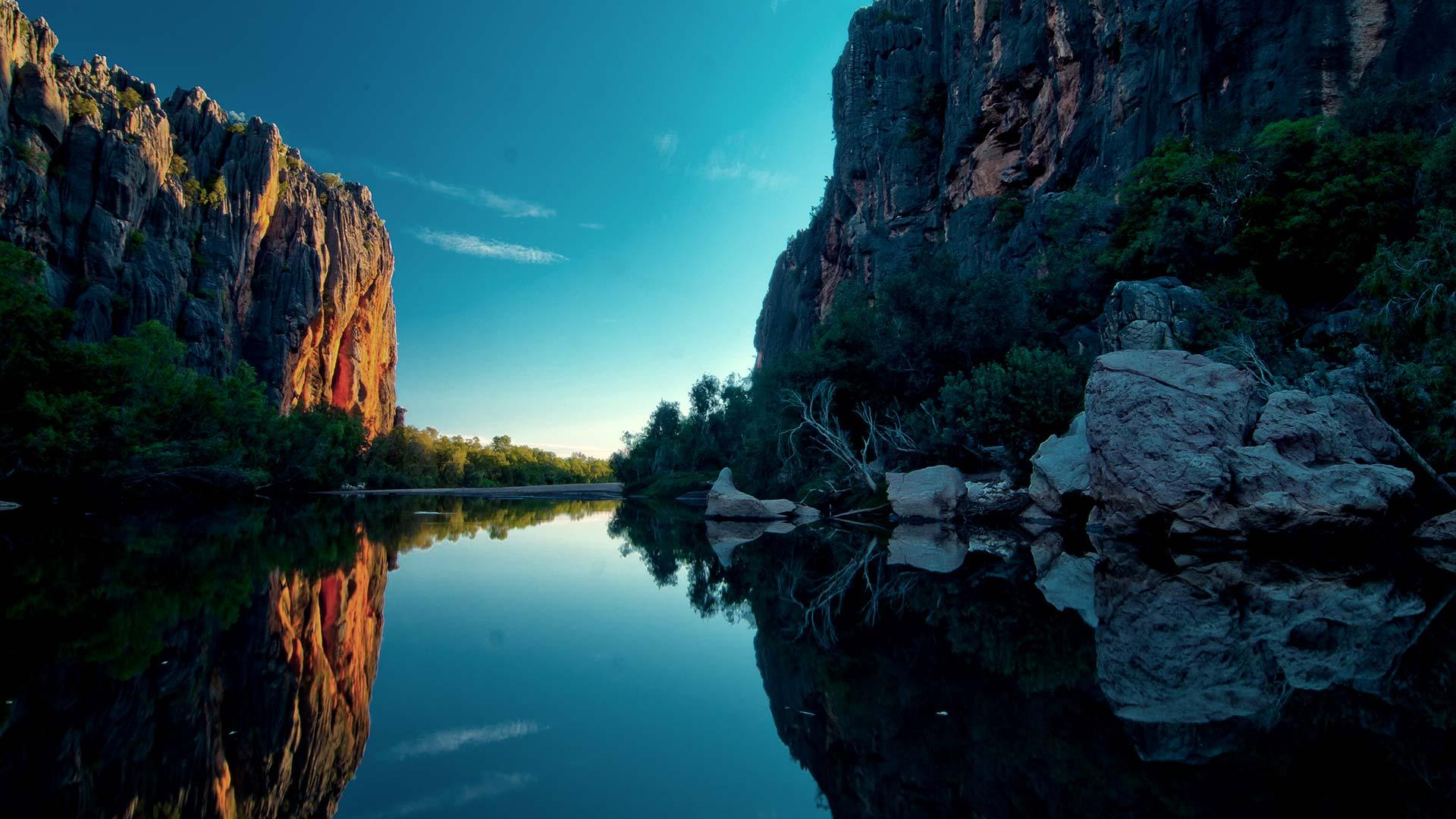
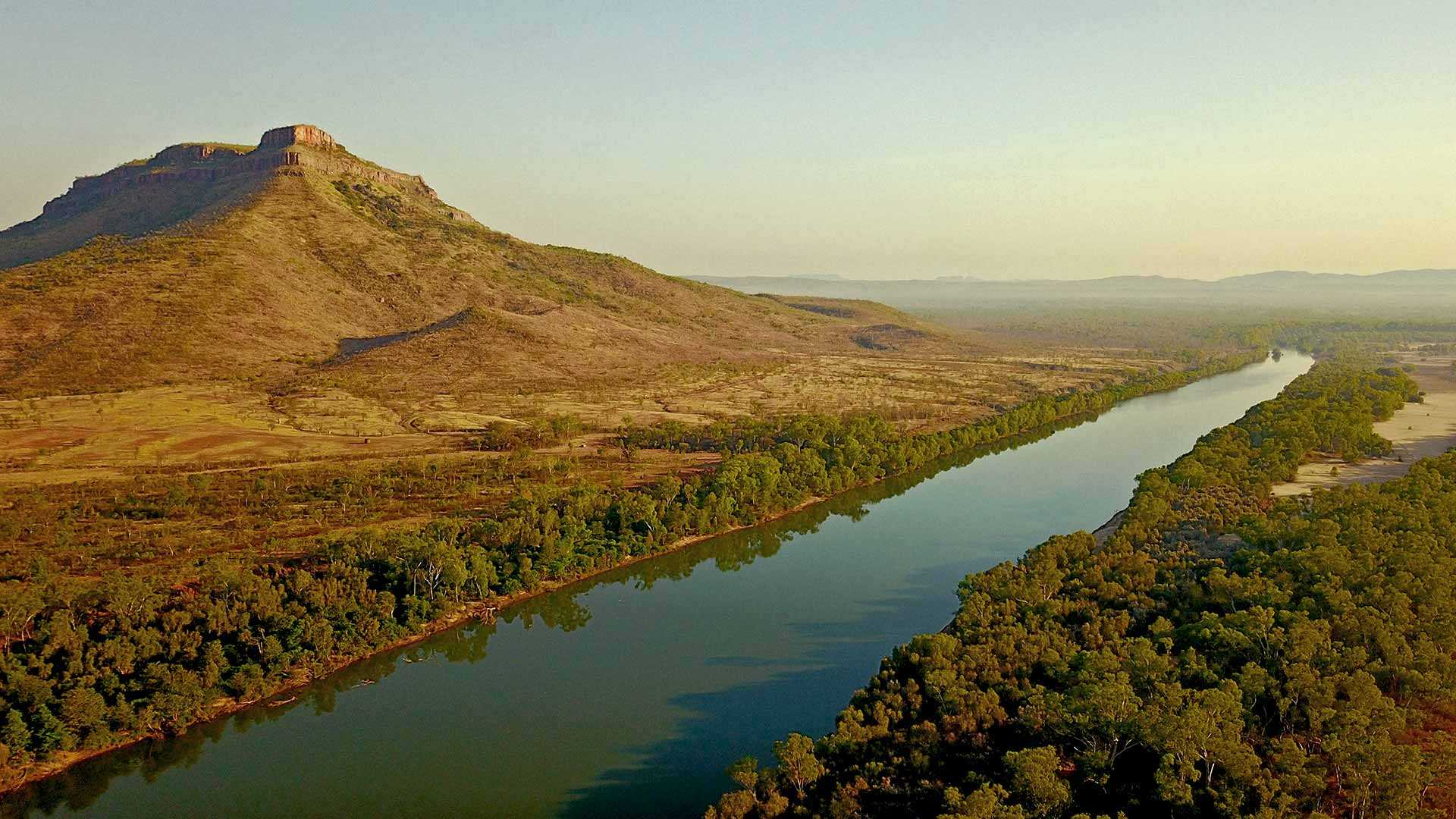
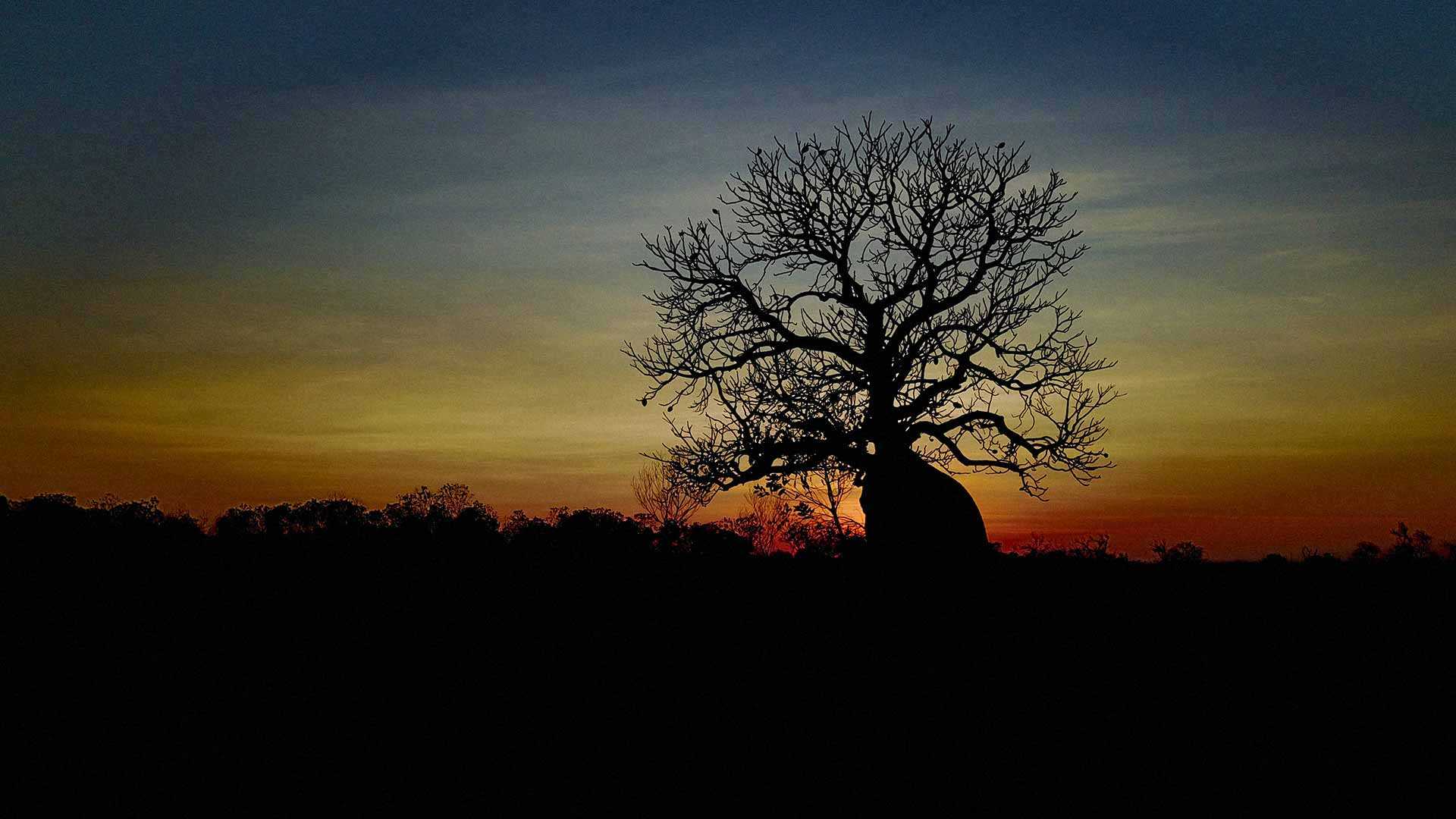
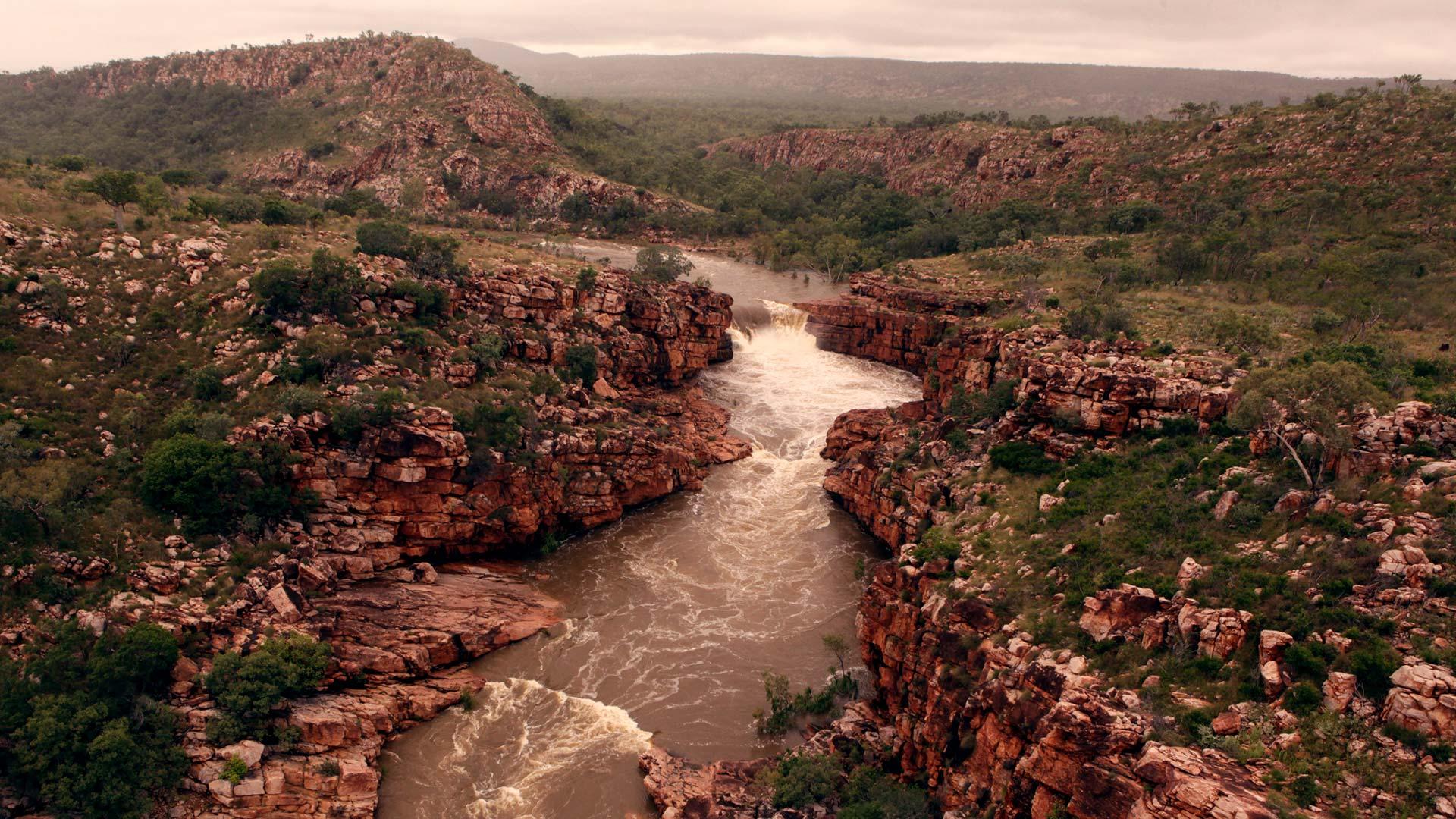
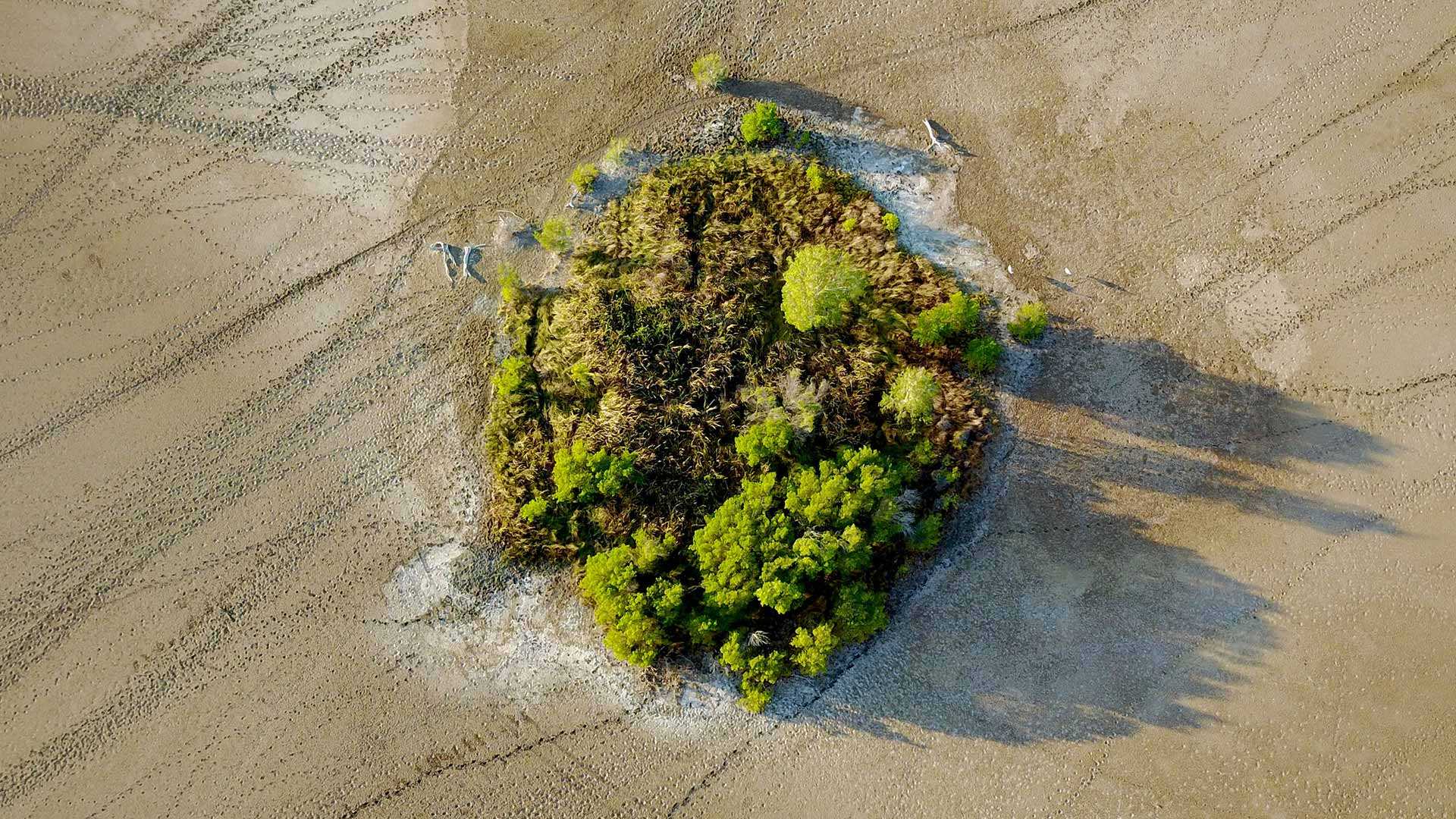
The stark reds and azure blues of the Kimberley Coast and the site of $45 billion LNG terminal. Wilderness Society supporters forced Woodside Petroleum to walk away from Walmanday / James Price Point in 2012 after an eight year battle. Image: Jenita Enevoldsen.
The footprint of a Thyreophoran, a type of armoured dinosaur, at Walmanday (James Price Point). This print is between 127 to 140 million years old. Image: Jenita Enevoldsen.
One of the most impressive places to see the Kimberley's famous gorges.
In the north-east snakes the Ord River.
Some Boab trees are over 1500 years old, making them the oldest life forms on our continent. Photo: Jenita Enevoldsen
The Kimberley's gorges transform in the wet season. Photo: Hugh Brown
Springs in the East Kimberley provide important habitat for birdlife.
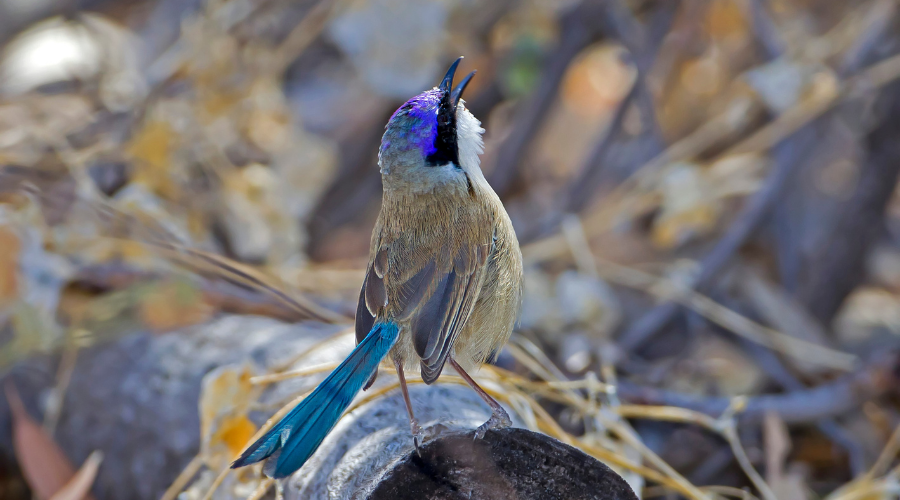
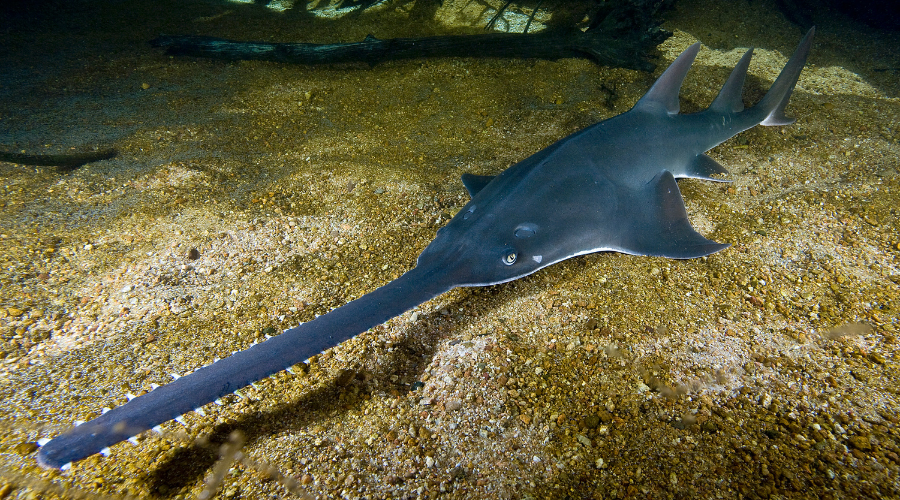
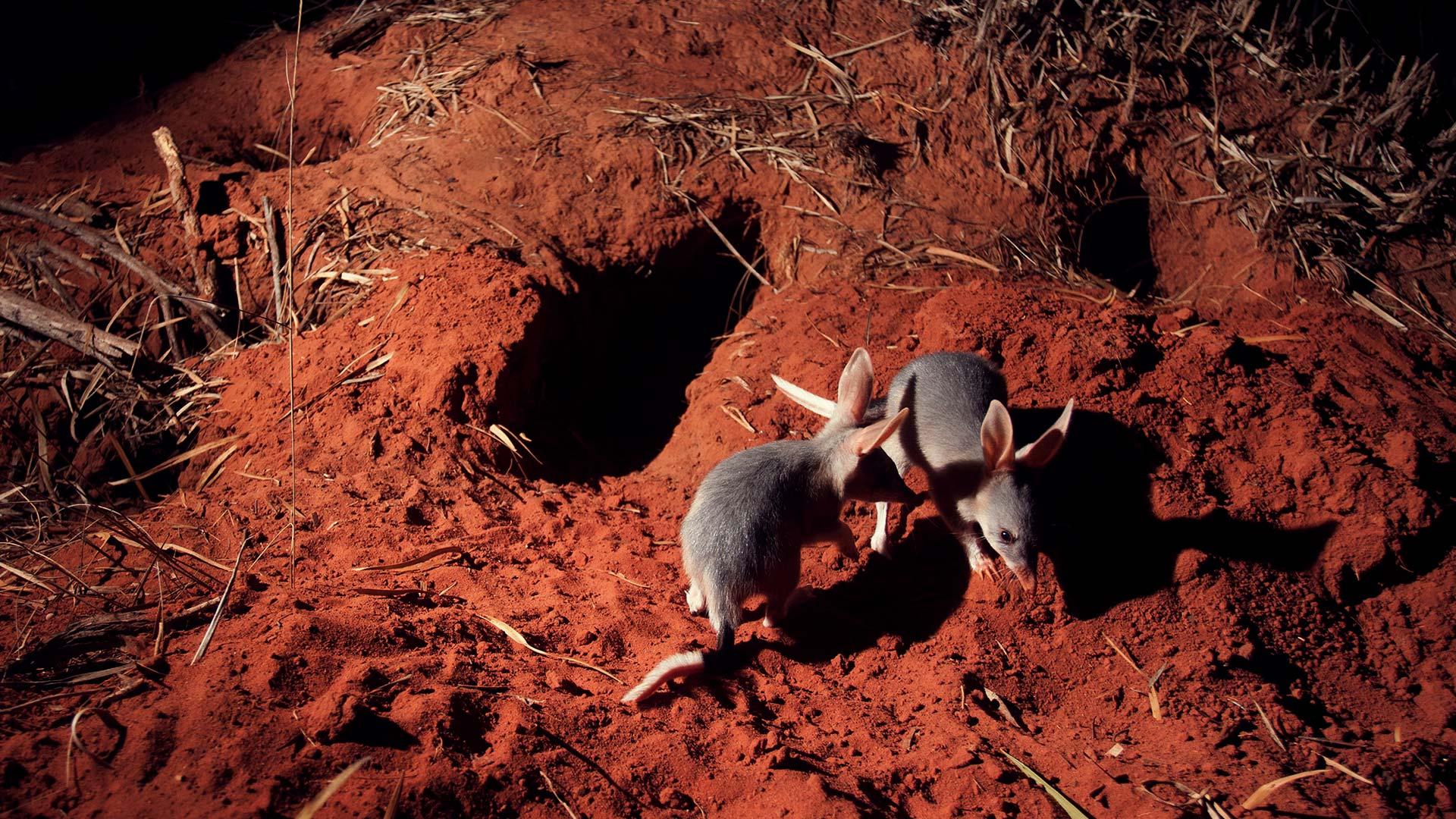
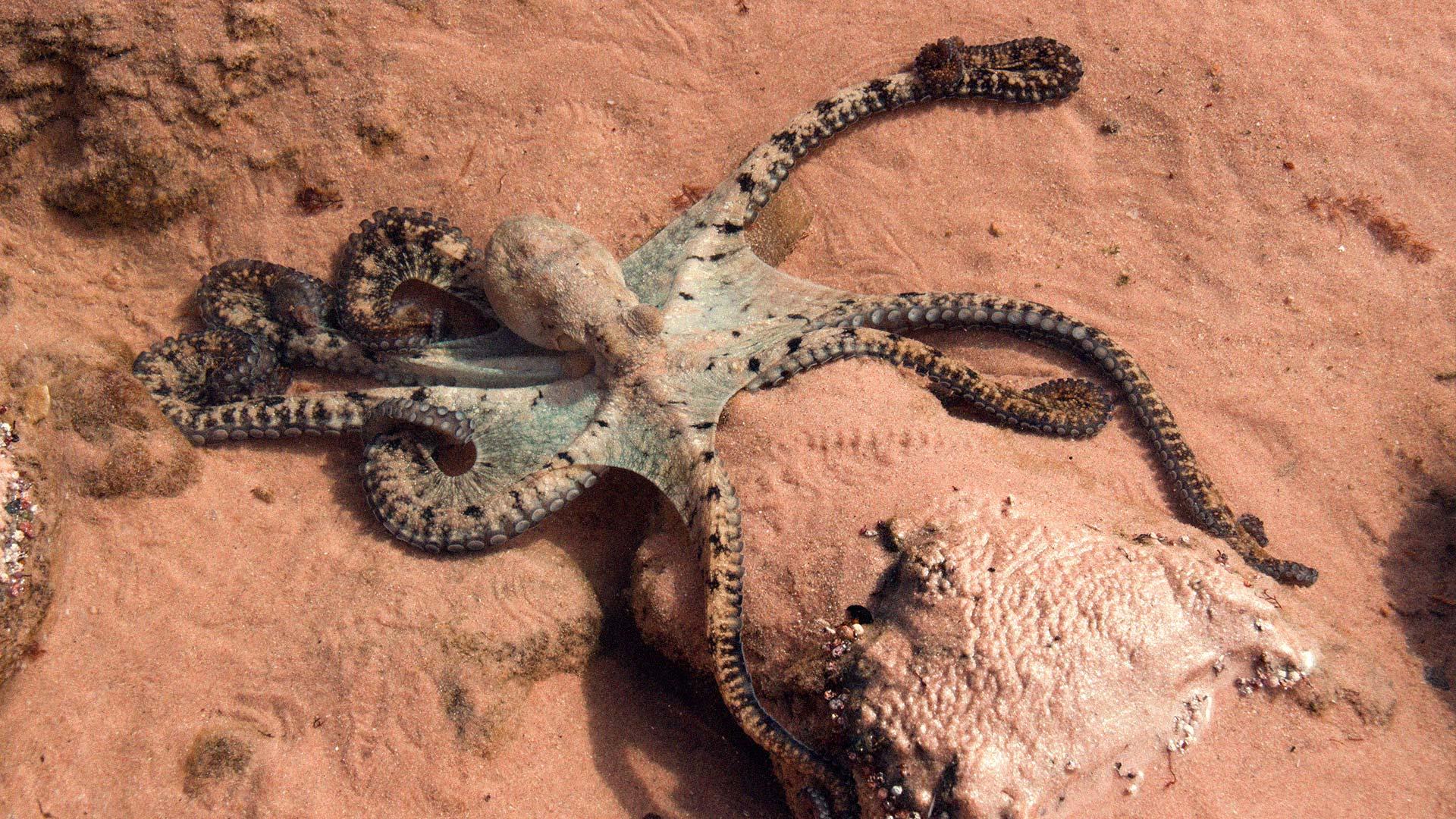
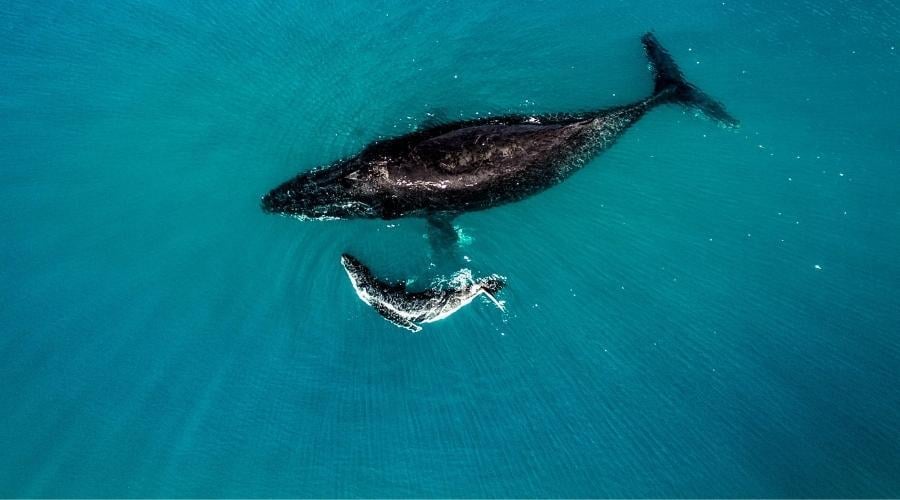
The tiny, endangered purple-crowned fairy wren lives alongside the Kimberley’s waterways. Bushfires and cattle grazing have already eroded its habitat, and what’s left needs urgent protection.
The critically endangered freshwater sawfish is one of the most evolutionary unique species on the planet, meaning there aren't many other species near it on its branch of the tree of life. Martuwarra is one of its last strongholds. If you see one, dead or alive, take a photo, and send your findings to Sharks And Rays Australia, which is monitoring the health of this globally important population. Image: David Wachenfeld, Triggerfish Images, Simon Fraser University.
Known as "ecosystem engineers" our burrowing animals keep soil healthy, spreading important mycorrhizal fungi and bringing vital nutrients to the surface. Photo: Damian Kelly
Coulomb Point, Kimberley, Western Australia.
Lalang-garram/Camden Sound Marine Park represents the largest humpback whale nursery in the world. Image: Damian Kelly Photography
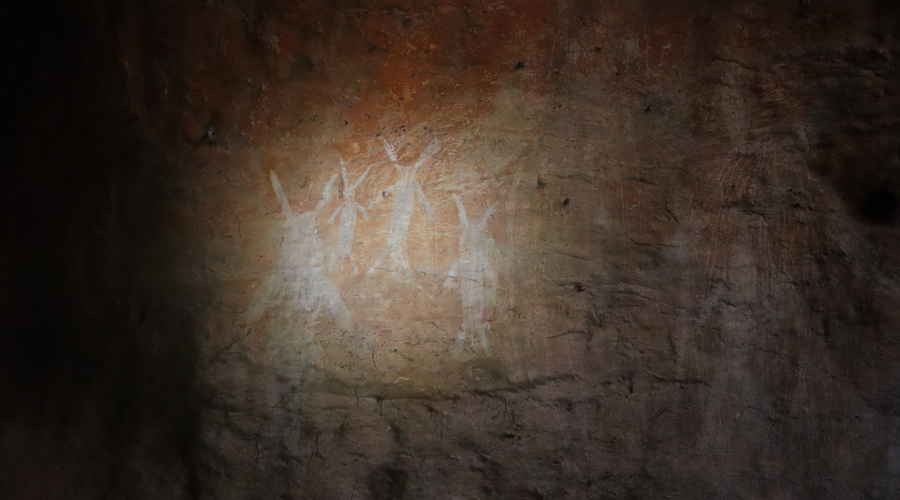
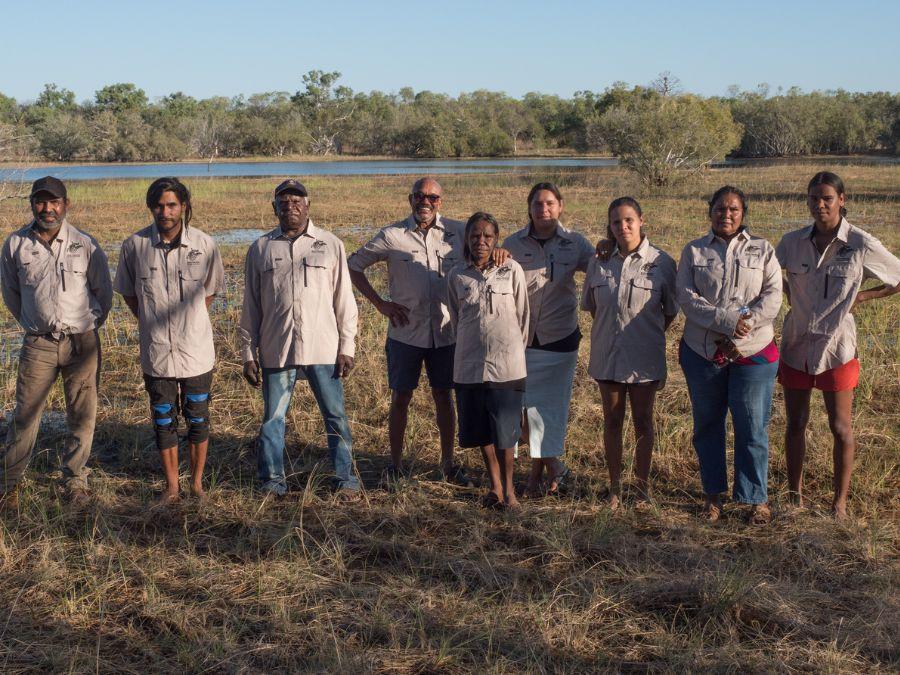

A First Nations-led workforce protecting and regenerating Martuwarra/Fitzroy River, culture and community. Image: River Keeper Teagan at Mangkajarra | Martuwarra Fitzroy River Council
Back in 1992, the Wilderness Society proposed a series of national and marine parks to protect the intact ecosystems that support life in the Kimberley. Finally, the Western Australian Government is taking action. Since 2010, the Wilderness Society helped to secure six new marine parks, including the Great Kimberley Marine Park, to rival the Great Barrier Reef.
The habitats of some of the Kimberley’s most precious species still don't have protection. With plans for large scale irrigation, bushland clearing and gas fracking on the books. We’re working to change that.
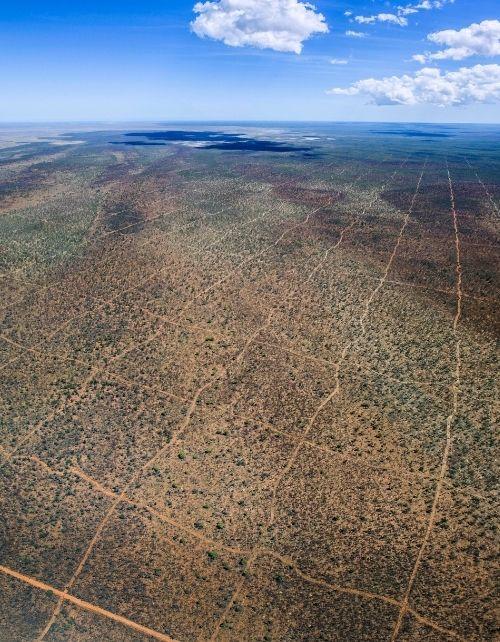
The Kimberley is home to the largest intact tropical savannah forest on the planet—yet most of its vegetation isn’t safe from deforestation. Large areas have already been cleared for mining and fossil fuel exploration, fragmenting vital habitat and reducing future carbon storage.
Martuwarra / Fitzroy River seasonal water flows sustain plants, animals and people across nearly a quarter of the Kimberley. Yet it’s facing the kind of devastation we’ve seen on the Barka / Murray Darling River. Gina Rinehart is among those who want to extract billions of litres of water a year from Martuwarra for irrigation agriculture.
Martuwarra is the world’s last stronghold for critically endangered freshwater sawfish. Draining the River for irrigation could tip this ancient species into extinction.
Communities across the Kimberley have held back oil and gas fracking companies for nearly a decade, but the fight is far from over. There are proposals to expand oil and gas fracking across the Great Sandy Desert. These projects would tear up fragile ecosystems, pollute Martuwarra and other vital waterflows—as well as accelerate the climate crisis.
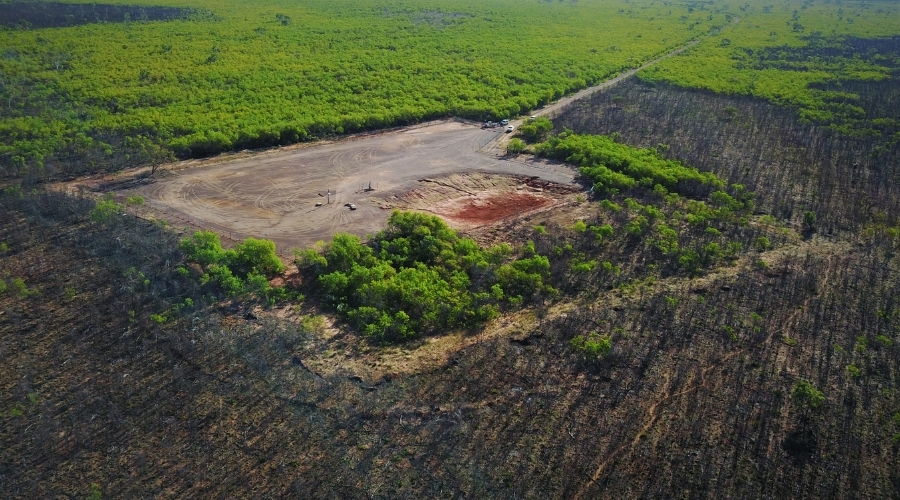
Traditional Custodians want Kimberley fracking plans scrapped. "We understand that there's lots of resources on our Country. But what needs to be understood is that it is our responsibility—and our right—to look after our Country," says Yawuru Traditional Custodian Mr Corpus.
WARNING: Aboriginal and Torres Strait Islander viewers are warned that the following article contains images and words of a deceased person. Mr Corpus' family have given permission to publish the following article.
Read more about the fight for a frack-free Kimberley.
Walmanday / James Price Point is a case in point. Woodside Petroleum was ready to invest $45 billion in the project—a giant LNG gas export terminal. But the economics didn’t stack up.
We helped to unite opposition by supporting Traditional Custodians and concerned locals, and bringing together tens of thousands of nature lovers across Australia to stop this bizarre plan. After eight years of protests and legal battles, the companies involved were forced to walk away.
We may have won that battle—but there are many more to come.
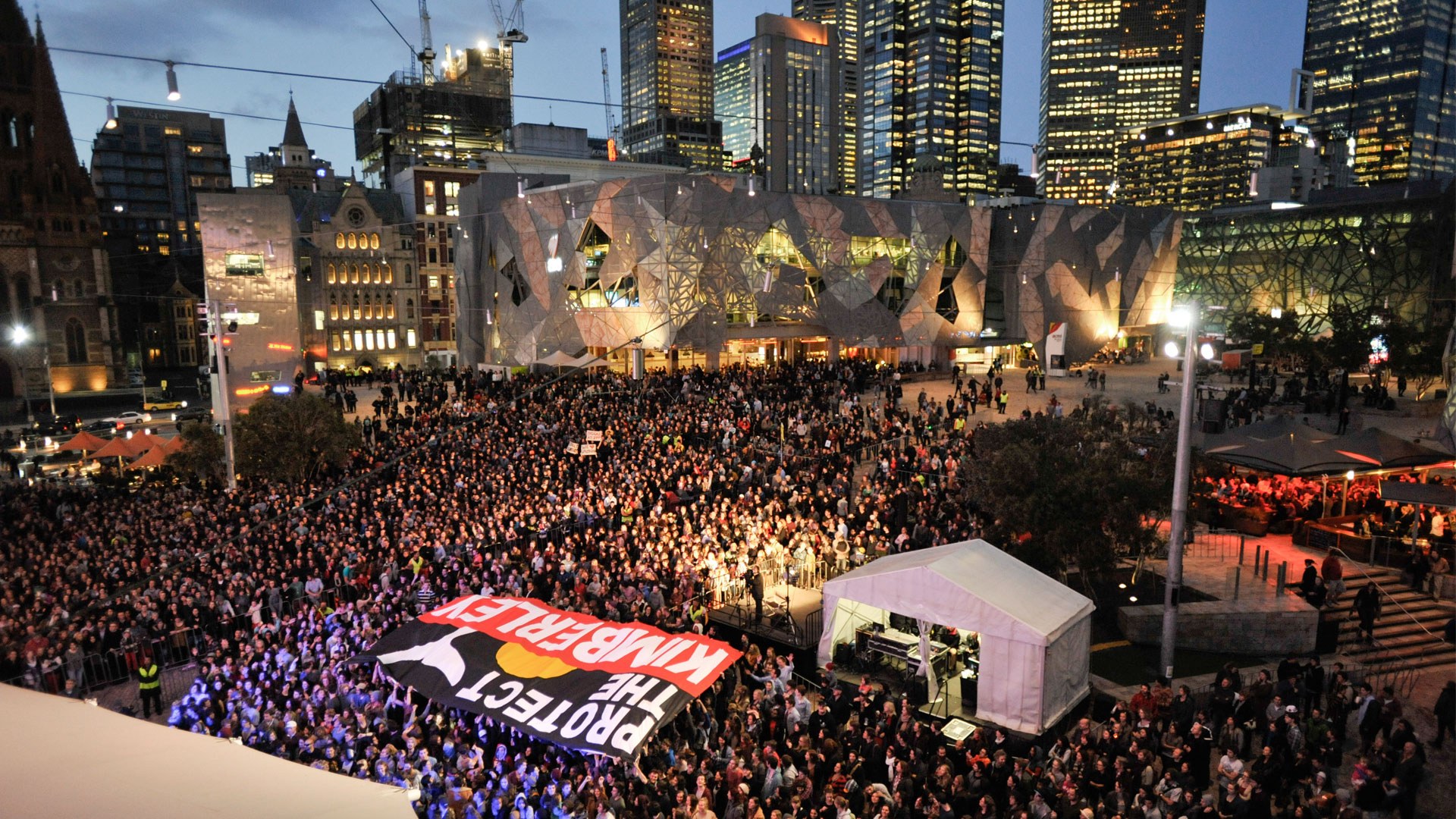
We want the world to recognise the Kimberley for its rich history—as a place where protections for land and sea interconnect, and ancient cultural landscapes are celebrated.
For our climate's sake, the fossil fuels hidden deep beneath the Kimberley must stay there. Forever.
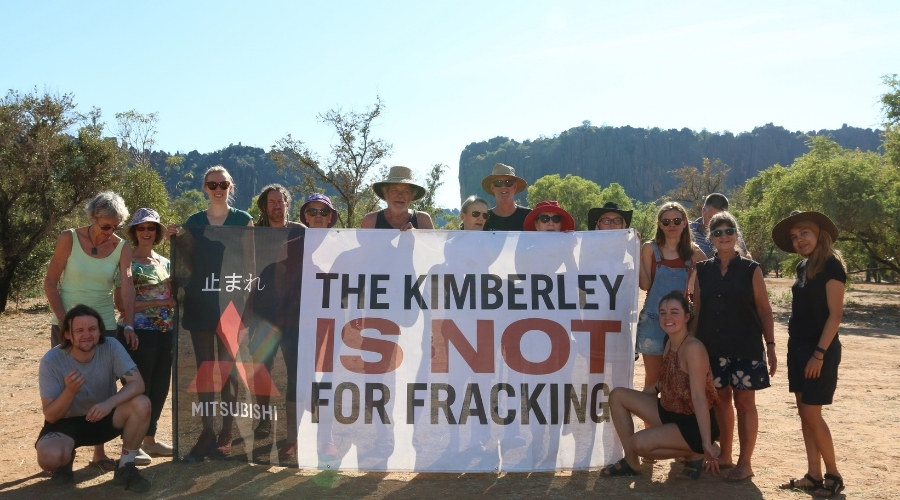
That's why we’ve joined local groups to forge a comprehensive renewable energy plan for the region and are working towards ensuring fracking corporations—like Texan frackers Black Mountain—exit their plans that threaten the climate, water and globally significant biodiversity of the region.
The Kimberley is an ancient cultural landscape of global significance, and worth far more to everyday Australians intact.
We support the rights and aspirations of First Nations people to protect their ancient cultural connections to Country.